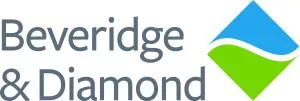- within Energy and Natural Resources topic(s)
- with Senior Company Executives, HR and Finance and Tax Executives
- in United States
- with readers working within the Environment & Waste Management, Oil & Gas and Construction & Engineering industries
Key Takeaways
What Happened? To assist in meeting the state's target of reducing methane emissions by 40% by 2030, the California Air Resources Board (CARB) recently proposed significant amendments to its Landfill Methane Regulation (LMR), with far-reaching impacts on California's landfill and gas recovery industries. Among other changes, these amendments would require extensive new leak-monitoring and repair protocols, tighten regulatory timelines for installing gas collection and control systems (GCCS), and mandate more frequent and extensive monitoring and analysis of cover integrity, temperature, oxygen, and liquid levels.
Who is Affected? The LMR applies to 188 municipal solid waste landfills (MSWs) in California. Under the proposed revisions, compliance obligations would extend beyond landfill owners and operators to include third-party owners and operators of GCCSs. The proposed rule may also benefit companies that offer alternative methane monitoring technologies, and could potentially impact the value of credits earned for “avoided methane emissions” under California's Low Carbon Fuel Standard.
Next Steps? Impacted parties, including those operating third-party gas collection systems, should consider commenting on the proposal. The comment period will close on November 10, 2025. CARB has also announced a public hearing set for November 20, 2025. For more information, please contact the authors.
The proposed revisions to the LMR come as Colorado is also weighing a proposed rule to reduce methane pollution from landfills. Other states may follow suit, particularly as the federal government steps back from greenhouse gas regulation efforts. California may continue to serve as a model for other states' rulemaking efforts.
Below, we summarize the proposed rule's new approach to alternative technologies and some key proposed changes to the LMR's methane emissions monitoring, GCCS operations, and reporting requirements.
Alternative Technologies
Broadening approvals: Under the current rules, operators may request approval to use alternative surface emission monitoring (SEM) procedures for individual landfills. However, the existing LMR does not provide a mechanism for allowing other landfills to take advantage of the approved technology (such as the U.S. Environmental Protection Agency's industry-wide approval of drone technology under OTM-51). The proposed amendments would allow any entity — not just landfill owners and operators — to request CARB's approval to use alternative SEM procedures. If CARB determines that the technology meets the proposed rule's criteria and grants the application, then any entity could use the approved technology.
Broad acceptance of new technologies: The CARB Initial Statement of Reasons (ISOR) for the proposed rule reflects a strong interest in supporting a wide array of “next-generation technologies” for surface monitoring, including drones, aircraft, autonomous vehicles, lasers, and continuous emissions monitoring technologies. By allowing a wide variety of technologies to be considered, provided that they comply with the proposed criteria and CARB approves them, the revised LMR could further enhance the development and maturity of these alternative technologies.
Stricter SEM requirements: CARB supports the implementation of these technologies, in part, to allow more frequent monitoring of areas previously exempted from SEM due to the difficulties and hazards of accessing them on foot for manual monitoring. By encouraging the adoption of alternatives and, in some cases, requiring remote monitoring, CARB will likely provide less flexibility in exempting such areas from monitoring.
Methane Emissions Monitoring
Responding to Remote Detections of Plumes: The amendments seek to address the impacts of large methane plumes that are typically not detected by standard SEM procedures. To monitor these plumes, CARB already conducts remote methane plume sensing through a third-party satellite vendor, and has been sharing plume detection information with landfill operators to encourage corrective actions on a voluntary basis over the last few years. The amendments would require landfills to conduct targeted SEM and corrective actions when notified by CARB that a large methane plume has been remotely detected at their site.
Narrowing SEM Exemptions: CARB is proposing to leave the SEM exceedance threshold at the current level, but the agency is concerned about “excessive exemptions” from SEM. The proposal would tighten the SEM requirements in a number of ways:
- Working faces couldonly be excluded from SEM for a maximum period of 180 calendar days after initial waste placement, and only if active filling and compacting operations are ongoing.
- Remote monitoring would be required for areas that are currently exempt from SEM because they are unsafe to access for manual monitoring.
- Wider walking path intervals would no longer be permitted when there have been no exceedances in the past three years.
- SEM standards would still apply during well raising, repairs, temporary shutdown of gas collections system components, and construction activities.
Rapid Corrective Actions: The rule would significantly shorten the time period allowed for corrective actions, re-monitoring, and well installation after SEM exceedances are identified. The initial corrective action period would cut by more than half, from ten days to three days, with an additional 1-month follow up check required. If the exceedance recurs three times, the current rules allow 120 days from the date of that third exceedance to install a new or replacement well; under the amendments, the 120-day clock would start after the date of the initial exceedance.
Leak Monitoring: Under the proposed amendments,owners and operators would be required to develop and implement a facility-specific component leak monitoring and repair plan, which would include requirements for more detailed tagging of leaks and require additional details to promote consistent monitoring.
Recurring Exceedance Requirements: Following the occurrence of five initial instantaneous or three initial integrated surface emissions exceedances in a single grid over any 12-month period, landfills must complete collection system and cover integrity assessments within 30 calendar days of reaching the threshold. They would be required to correct any issues identified in the assessments within 60 calendar days, and to increase SEM frequency to monthly.
Recordkeeping: Rather than only requiring records of readings above 200 ppm, records would be mandatory for all readings, with a frequency of at least one measurement every second.
GCCS Operations
Rapid GCCS Installation: Under the proposed amendments, the timeframe for installing a GCCS would shrink from 18 to 6 months following Design Plan approval for active landfills, and from 30 to 18 months for closed inactive landfills.
Requiring Early Gas Collection: Any owner or operator of an MSW landfill that accepted at least 200,000 tons of solid waste per year in any of the prior three calendar years would be required to install horizontal collectors or caisson wells in areas of new waste to capture methane generated in areas with ongoing disposal operations.
Minimizing Downtime: CARB is concerned that long periods of well downtime during filling or construction contribute to methane emissions, and has proposed several changes to minimize the allowances for well downtime.
- Wells and other GCCS components that are shut down for permissible reasons would be required to be returned to operation no more than five calendar days following initial shutdown, or CARB must be notified. CARB would allow exemptions for wells that are reconnected to vacuum at the end of each workday.
- No more than five wells, or five percent of the total number of wells at the landfill (excluding decommissioned wells), could be offline at any time except when shut down to prevent or extinguish fires.
- If the gas collection system is not working, the gas mover system shall be shut down, and all valves contributing to venting gas to the atmosphere shall be closed immediately using an automatic gas mover shutdown – but these shutdowns cannot exceed 120 hours per calendar year, or CARB must be notified.
Expand Wellhead Monitoring: The LMR currently requires monthly pressure monitoring, and the amendments would add temperature, flow rate, and gas composition monitoring.The proposal would also require further corrective action steps after high-temperature readings (with separate measures identified for exceedances of 131, 145, and 170 degrees Fahrenheit), and after recurring positive pressure or high oxygen readings. Landfills are also required to “examine monthly records for each well” to conduct a trend analysis, and implement additional monitoring measures if certain percentage increases of given parameters are identified.
Treatment System Monitoring: The new rule would clarify that gas measurement points should be installed at each inlet and outlet of the treatment system, and would require electronic archiving of all monitoring data. These requirements are intended to ensure monitoring is still conducted for gas treatment systems where the gas is not combusted, but instead used in vehicles or injected into a common carrier gas pipeline.
Liquid Level Monitoring: The amendments would require owners and operators to monitor well liquid levels twice per year, once between February and April and once between September and November. If any well's liquid level exceeds 50% of the screened interval, quarterly monitoring is required at that well until its liquid level is below 50% for four consecutive quarters.
Applicability, Reporting, and Recordkeeping
Application to Non-Landfill Owners and Operators: CARB notes that the current LMR is unclear regarding applicability to GCCS owners and operators who are not also landfill owners and operators. The proposed amendments would revise the definitions of “owner” and “operator” to clarify that any party that “receives” gas is subject to the rule's requirements. These entities would also be newly subject to the requirement to submit a Design Plan, which would apply six months prior to accepting landfill gas.
Cover Monitoring Plan: Landfill owners and operators would be required to develop and implement more detailed cover integrity monitoring plans, including protocols and procedures to identify and address issues such as exposed waste, leachate breakouts, and erosion gullies.
ACO Expiration: Existing ACOs would be required to be re-submitted for approval by April 1, 2027, or they would be invalidated by January 1, 2028.
Additional Recordkeeping Requirements: The revised LMR would establish several new processes and protocols for recordkeeping, including additional measures related to the Alternative Compliance Option (ACO) process, applications for shutting down or phasing out a GCCS, the Annual Gas Collection and Control System Report, various notifications to CARB, and requirements for electronic recordkeeping and reporting.
Next Steps
CARB is currently soliciting public comments on all proposed amendments. Impacted parties can submit comments until November 10, 2025. Additionally, CARB will conduct a public hearing on the regulatory action on November 20, 2025, at 9 a.m. PST. In person or zoom attendance available.
The content of this article is intended to provide a general guide to the subject matter. Specialist advice should be sought about your specific circumstances.
[View Source]




